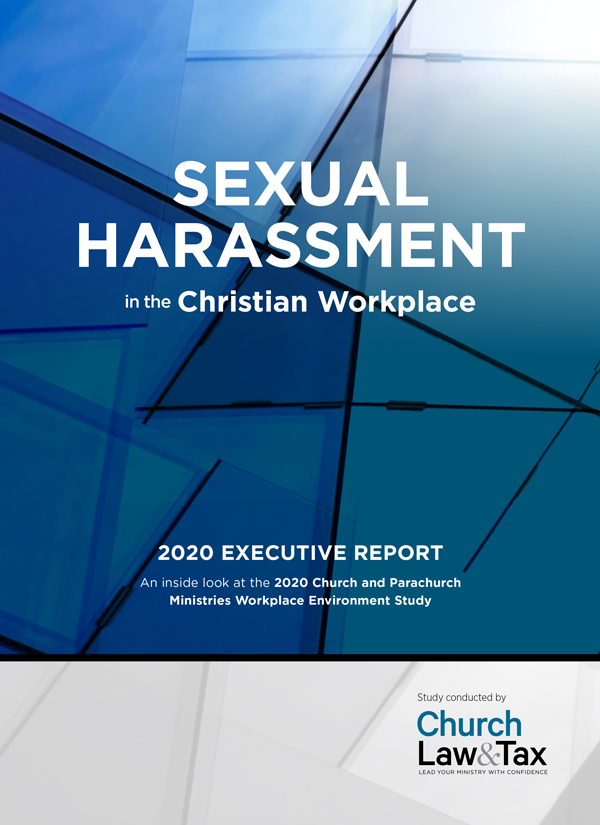• Key point. Employment decisions having an adverse effect upon a member of a protected class are not necessarily discriminatory.
A federal court dismissed a race and sex discrimination claim brought by a former employee against a church agency on the ground that he failed to demonstrate that his dismissal was discriminatory or that the church treated white employees more favorably. A black male (the “plaintiff”) was employed by the women’s division of a denominational agency. He had received outstanding work evaluations during his employment. On one occasion he alleged that he was told to answer the phone and to tell anyone calling for the executive assistant that she was “unavailable” or in a meeting. Because the executive assistant was actually not at work on that date, the plaintiff said he did not want to lie, especially to the executive assistant’s husband who was calling repeatedly. The plaintiff claimed that he was then told to tell the husband that his wife was “not at her desk,” since that was not a lie. The plaintiff felt that this, too, was a lie and refused to answer the phone. He was then told not to answer the phone. The following day, he was not answering the phones, though he was the only support staff in the department. When asked why he was not answering the phone, he responded that he had been instructed, as a result of the prior day’s incident, not to answer the phone. Following these incidents the plaintiff wrote two memos to the human resources director (“director”) alleging that he was being sexually harassed based on these two incidents and other allegations. The director referred the matter to an attorney, who conducted an investigation. The investigation consisted of interviewing plaintiff and several of his co—employees. The attorney concluded that plaintiff’s complaints were unfounded. The attorney also recommended that the plaintiff be terminated for insubordination for refusing to answer the phone. This recommendation also was based on the interviews the attorney conducted with plaintiff’s co—workers in which he was told that the plaintiff made sexually suggestive remarks to co—workers, was loud, and that some people thought he might be violent. No documentation supporting these allegations was collected by the attorney. The plaintiff was dismissed, and he sued his employer.
The court began its opinion by noting that the plaintiff “bears the burden of establishing a prima facie case of discrimination,” meaning that he must establish that (1) he is in a protected group; (2) he satisfactorily performed the duties of his position; (3) he was subject to an adverse employment action; and (4) the adverse action occurred in circumstances giving rise to an inference of discrimination. Failure to provide some factual support for each of these elements of a “prima facie” discrimination case requires that a court dismiss it. The church argued that the plaintiff failed to establish a prima facie case of discrimination because he was not qualified for his job, and his termination did not raise an inference of discrimination. The court agreed. It observed that the plaintiff’s termination for refusing to answer the phone “was unfortunate-indeed, it may easily be characterized as unfair-[but] that alone does not suffice to raise an inference of discrimination.”
The only facts cited by the plaintiff in support of his discrimination claim were (1) the more lenient treatment of another employee who, like plaintiff, was accused of harassing female employees, and (2) that two other black employees had been fired for alleged “insubordination”. With regard to the first allegation, the court pointed out that the other employee was also a black male, “thus negating any inference of discrimination that could possibly be drawn from his disparate treatment.” With regard to the second allegation, the court noted that “the fact that two other black employees had been fired by defendants for insubordination does not raise an inference of discrimination absent some showing-however minimal-that white employees were treated differently.” The court noted that the plaintiff “failed to allege, let alone identify, any such incidents of disparate treatment that might give rise to an inference of discrimination in this case.” The court concluded, “simply put, the facts that plaintiff was male and black, without more, do not suffice to make out a prima facie case of [sex or race] discrimination ….” Jones v. General Board of Global Ministries, 1997 WL 458790 (S.D.N.Y. 1997). [ Title VII of the Civil Rights Act of 1964]
© Copyright 1998 by Church Law & Tax Report. All rights reserved. This publication is designed to provide accurate and authoritative information in regard to the subject matter covered. It is provided with the understanding that the publisher is not engaged in rendering legal, accounting, or other professional service. If legal advice or other expert assistance is required, the services of a competent professional person should be sought. Church Law & Tax Report, PO Box 1098, Matthews, NC 28106. Reference Code: m43 c0198


